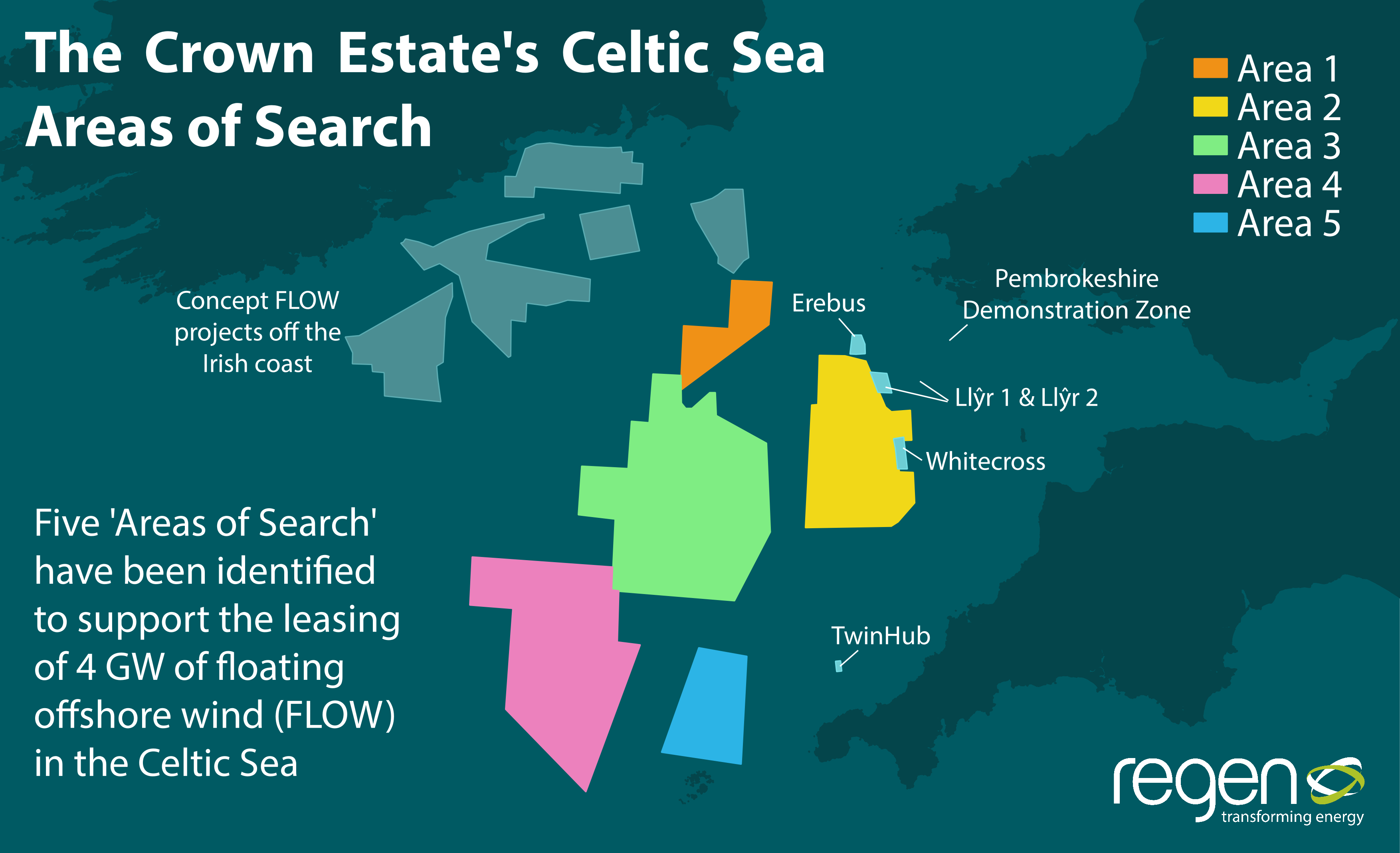Regen welcomes the announcement of The Crown Estate’s leasing strategy for the Celtic Sea, including the identification of five ‘Areas of Search’ and an approach to phased development. This marks the start of the Celtic Sea leasing process and the unlocking of GWs of floating offshore wind on the West coast of the UK.
This statement was written by Grace Millman, part of Regen’s offshore energy team.

